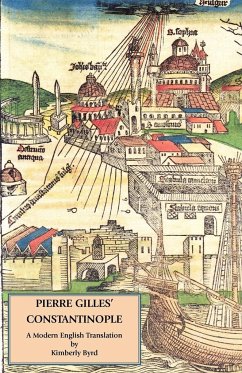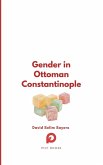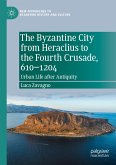In the mid-sixteenth century François I ruled France, and Suleyman the Magnificent sat on the throne of the Ottoman Empire. Although the two leaders were separated by culture, religion and politics, the Catholic François and the Muslim Suleyman joined forces for a time in a political alliance to check the Hapsburg threat to both their empires. In 1544 Pierre Gilles of Albi, an established scholar and author, arrived in Constantinople as a member of a French embassy aimed at furthering this alliance. Constantinople was then the largest and wealthiest city in Europe. Its nearly 700,000 inhabitants outnumbered the combined populations of western cities such as Venice, Palermo, Messina, Catania and Naples. It was the Mediterranean capital, and home to a truly international population of Turks, Greeks, Jews, Armenians, Gypsies, Arabs, Africans, Slavs, French and others who lived side by side, for the most part in peace. They worshipped in over 400 mosques and dozens of Christian churches, engaged in commerce in tens of thousands of small ateliers and shops, and sailed the waters of the Bosporus, Golden Horn and Marmara in thousands of small boats, ferries and ships. Each year the populace consumed over 100,000 tons of wheat and other grains and hundreds of thousands of head of cattle and sheep. It was an age of bold architecture, dazzling ceramics and textiles, brilliant poetry, history, and philosophy. Gilles' mission was to find and purchase ancient Greek manuscripts for François' humanist library. But while in Constantinople Gilles conceived his own project: to study the history and monuments of the former Byzantine capital on the spot and to publish his findings bolstered and compared with what he could learn from the ancient and medieval sources. The result was his "Topography of Constantinople and Its Antiquities in Four Books." Kimberly Byrd offers a new edition of Gilles' important work: "Pierre Gilles' Constantinople" includes her complete English translation of the Topography with references to Gilles' sources and to the most important recent scholarship on the city and its monuments. English-speaking readers have long relied on John Ball's 1729 translation and on its modernization published by Italica Press in 1988. This fine edition supplants that volume and offers a fresh and important addition to the scholarship on Constantinople, its ancient heritage, and to the evolving study and practice of classical archaeology in Renaissance Europe. 328 pages, 59 illustrations, 5 maps.¿ Preface, bibliography, index.
Hinweis: Dieser Artikel kann nur an eine deutsche Lieferadresse ausgeliefert werden.
Hinweis: Dieser Artikel kann nur an eine deutsche Lieferadresse ausgeliefert werden.








